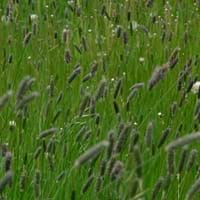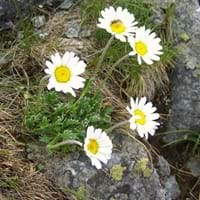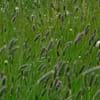Life Span
Perennial
Perennial
Origin
Europe, Asia
Eastern Europe, Southern Europe, Western Europe, Turkey, Central Asia, Western Asia
Types
not available
Not Available
Habitat
Grassland
Cultivated Beds
USDA Hardiness Zone
5-8
Not Available
Sunset Zone
2a, 2b, 3a, 3b, 4, 5, 6, 7, 8, 9, 10, 14, 15, 16, 17, 21, 22, 23, 24
2a, 2b, 3a, 3b, 4, 5, 6, 7, 8, 9, 10, 11, 12, 13, 14, 15, 16, 17, 18, 19, 20, 21, 22, 23, 24
Habit
Clump-Forming
Upright/Erect
Flower Color
White
Gold, White, Yellow
Flower Color Modifier
Bicolor
Bicolor
Fruit Color
Not Available
Gold, Sandy Brown
Leaf Color in Spring
Green
Light Green, Gray Green
Leaf Color in Summer
Light Green
Light Green, Gray Green
Leaf Color in Fall
Green
Light Green, Gray Green
Leaf Color in Winter
Tan
Light Green
Leaf Shape
Grass like
Ovate
Plant Season
Spring, Summer, Fall, Winter
Summer, Fall
Sunlight
Full Sun
Full Sun, Partial Sun
Type of Soil
Clay, Loam, Sand
Clay, Loam, Sand
The pH of Soil
Acidic, Neutral, Alkaline
Acidic, Neutral, Alkaline
Soil Drainage
Average
Well drained
Bloom Time
Spring, Summer
Late Summer, Early Fall
Tolerances
Wet Site
Drought
Where to Plant?
Ground
Ground, Pot
How to Plant?
Seedlings
Divison, Seedlings
Plant Maintenance
Medium
Medium
Watering Requirements
Requires a lot of watering, Requires regular watering
Average Water Needs, Do not water from above
In Summer
Lots of watering
Lots of watering
In Spring
Ample Water
Moderate
In Winter
Moderate
Average Water
Soil pH
Acidic, Neutral, Alkaline
Acidic, Neutral, Alkaline
Soil Type
Clay, Loam, Sand
Clay, Loam, Sand
Soil Drainage Capacity
Average
Well drained
Sun Exposure
Full Sun
Full Sun, Partial Sun
Pruning
Prune to control growth
Remove damaged leaves, Remove dead branches, Remove dead leaves
Fertilizers
Requires high amount of nitrogen
All-Purpose Liquid Fertilizer
Pests and Diseases
Red blotch
Aphids
Plant Tolerance
Wet Site
Drought
Flower Petal Number
Single
Single
Fragrant Bark/Stem
No
Yes
Foliage Texture
Medium
Medium
Foliage Sheen
Matte
Matte
Invasive
Sometimes
Sometimes
Attracts
Not Available
Wildlife
Allergy
Asthma, conjunctivitis, Rhinitis
no allergic reactions
Aesthetic Uses
Not Used For Aesthetic Purpose
Borders
Beauty Benefits
Not Available
Not Available
Environmental Uses
Food for animals, Food for insects, Wildlife
Air purification
Medicinal Uses
No Medicinal Use
Antiseptic, Astringent, Digestive, Laxative
Part of Plant Used
Whole plant
extracted oil, Leaves
Other Uses
cultivated as pasture or hay crop, Food for animals, Food for insects
For making oil
Used As Indoor Plant
No
No
Used As Outdoor Plant
Yes
Yes
Garden Design
Feature Plant, Groundcover, Rock Garden / Wall
Edging, Edible, Herb / Vegetable, Mixed Border, Rock Garden / Wall, Wildflower
Botanical Name
ALOPECURUS pratensis
TANACETUM balsamita
Common Name
Meadow Foxtail
Beaver Tongue, Costmary, Lady's Herb, Painted Daisy
In Hindi
Meadow Foxtail
Painted Daisy
In German
Wiesenfuchsschwanz
gemalt Gänseblümchen
In French
vulpin des prés
painted daisy
In Spanish
pradera de cola de zorra
margarita pintada
In Greek
Meadow Foxtail
ζωγραφισμένα μαργαρίτα
In Portuguese
Meadow Foxtail
margarida pintada
In Polish
łąka ber
malowane stokrotka
In Latin
meadow Foxtail
picta primula
Phylum
Magnoliophyta
Tracheophyta
Class
Liliopsida
Magnoliopsida
Order
Cyperales
Asterales
Family
Poaceae
Asteraceae
Genus
Alopecurus
Tanacetum
Clade
Angiosperms, Commelinids, Monocots
Angiosperms, Asterids, Eudicots
Tribe
Not Available
Not Available
Subfamily
Not Available
Not Available
Number of Species
Not Available
Not Available
Season and Care of Meadow Foxtail and Painted Daisy
Season and care of Meadow Foxtail and Painted Daisy is important to know. While considering everything about Meadow Foxtail and Painted Daisy Care, growing season is an essential factor. Meadow Foxtail season is Spring, Summer, Fall and Winter and Painted Daisy season is Spring, Summer, Fall and Winter. The type of soil for Meadow Foxtail is Clay, Loam, Sand and for Painted Daisy is Clay, Loam, Sand while the PH of soil for Meadow Foxtail is Acidic, Neutral, Alkaline and for Painted Daisy is Acidic, Neutral, Alkaline.
Meadow Foxtail and Painted Daisy Physical Information
Meadow Foxtail and Painted Daisy physical information is very important for comparison. Meadow Foxtail height is 61.00 cm and width 40.60 cm whereas Painted Daisy height is 50.80 cm and width 40.60 cm. The color specification of Meadow Foxtail and Painted Daisy are as follows:
Meadow Foxtail flower color: White
Meadow Foxtail leaf color: Green
Painted Daisy flower color: Gold, White and Yellow
- Painted Daisy leaf color: Light Green and Gray Green
Care of Meadow Foxtail and Painted Daisy
Care of Meadow Foxtail and Painted Daisy include pruning, fertilizers, watering etc. Meadow Foxtail pruning is done Prune to control growth and Painted Daisy pruning is done Remove damaged leaves, Remove dead branches and Remove dead leaves. In summer Meadow Foxtail needs Lots of watering and in winter, it needs Moderate. Whereas, in summer Painted Daisy needs Lots of watering and in winter, it needs Average Water.





